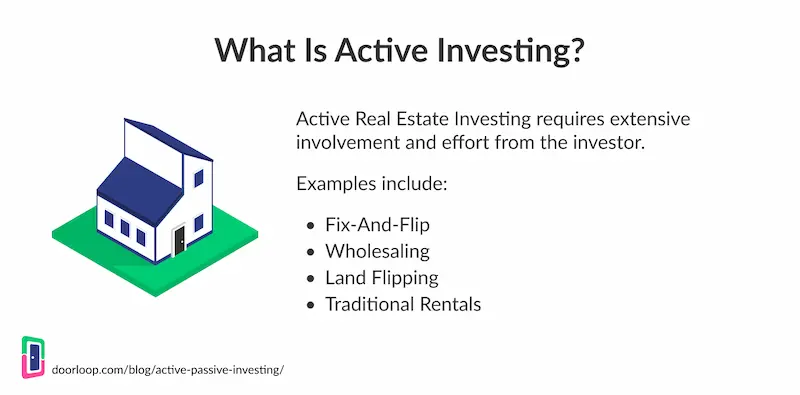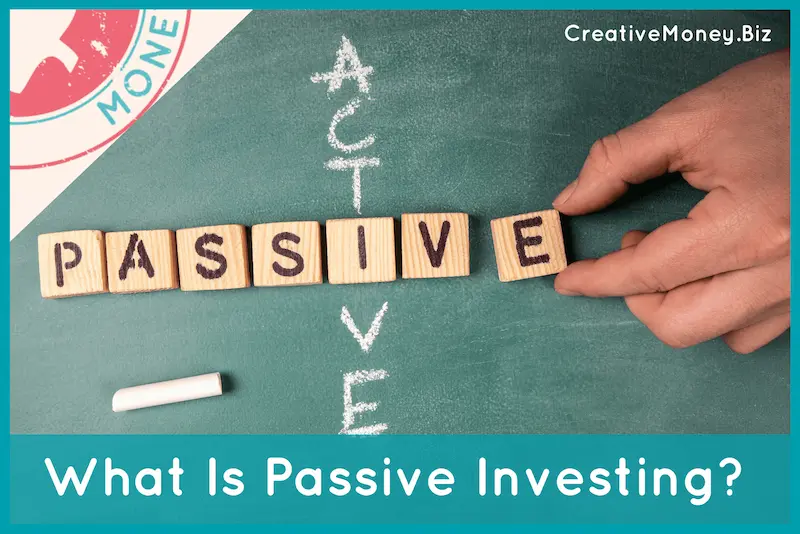The debate around active investing vs passive investing is one of the biggest conversations in the financial world. From seasoned pros on Wall Street to everyday investors, the question is always the same: Which strategy is better for long-term wealth?
The truth is, neither method is perfect. Each has strengths and trade-offs, and the right choice depends on your goals, risk tolerance, and how involved you want to be.
Think of it like travel:
- Active investing is like driving yourself. You choose the route, speed, and shortcuts. Done well, you might arrive faster—but mistakes or traffic can slow you down.
- Passive investing is like taking the train. It’s steady, reliable, and stress-free. You won’t get there faster than the market, but you’ll almost always reach your destination.
This article will break down both strategies clearly, so you can decide which approach—or mix of both—fits your financial journey best.
What Is Active Investing?

Active investing is a hands-on approach where the goal is simple but ambitious: beat the market. Investors—whether individuals or professional fund managers—actively buy and sell securities to outperform benchmarks such as the S&P 500 or Nasdaq.
How Active Investing Works
Active investors use detailed research, market forecasts, and sometimes even intuition to decide which assets to buy or sell. This constant monitoring and decision-making can involve analyzing financial statements, studying economic indicators, and watching for short-term market opportunities.
Key Features of Active Investing
- Frequent trading: Buying and selling happen regularly to capitalize on opportunities.
- Research-driven decisions: Relies on in-depth analysis, market timing, and stock picking.
- Higher costs: Active mutual funds and hedge funds often charge higher management fees, plus trading generates extra costs.
- Flexibility: Can quickly adjust to market changes, such as economic downturns or sector shifts.
Advantages of Active Investing
- Potential to earn above-average returns (alpha).
- Ability to hedge against market downturns by exiting or shorting risky positions.
- Opportunity to focus on specific sectors, themes, or undervalued companies.
Drawbacks of Active Investing
- Expensive fees eat into returns (management fees can reach 1%–2% annually).
- Hard to beat the market consistently—studies show most active funds underperform their benchmarks long-term.
- Requires time and skill—not ideal for investors who prefer a hands-off approach.
Example: During volatile years like 2020 or 2022, many actively managed funds failed to outperform the market. Only a small percentage consistently beat their benchmarks over several years.
What Is Passive Investing?

Passive investing, on the other hand, is the opposite philosophy. Instead of trying to outperform the market, passive investors aim to match the market’s performance by investing in index funds or ETFs that mirror major indices.
How Passive Investing Works
Investors buy into a broad market index, such as the S&P 500 or MSCI World, and simply hold it over time. This approach is based on the belief that the market tends to grow over the long run, and trying to “time” it usually backfires.
Key Features of Passive Investing
- Buy-and-hold strategy: Minimal buying and selling.
- Low costs: Very low expense ratios (some index funds charge as little as 0.03%).
- Broad diversification: Exposure to hundreds or even thousands of companies.
- Stress-free: No need to constantly monitor the market.
Advantages of Passive Investing
- Low fees mean more of your money stays invested.
- Consistent performance that closely tracks the overall market.
- Simplicity—perfect for beginner and long-term investors.
Drawbacks of Passive Investing
- Limited flexibility—you can’t adapt quickly to short-term opportunities.
- No chance of outperforming the market (only matching it).
- Exposed to downturns—you ride the market both up and down.
Example: A passive S&P 500 index fund will include both winners and losers. Even if a few companies perform poorly, your overall portfolio still mirrors the broader market trend.
Active Investing vs Passive Investing: A Side-by-Side Comparison
| Factor | Active Investing | Passive Investing |
| Goal | Beat the market (generate alpha). | Match the market’s performance. |
| Management style | Hands-on, frequent trading, research-driven. | Hands-off, buy-and-hold. |
| Costs | Higher fees and expenses. | Lower costs and minimal fees. |
| Flexibility | High – can adapt quickly to market shifts. | Low – follows the index regardless of conditions. |
| Risk | Higher – potential big wins or losses. | Lower – diversified and steady. |
| Consistency | Hard to maintain long-term outperformance. | Historically consistent over the long run. |
When Does Active Investing Work Best?
Active investing isn’t for everyone, but it can be effective if:
- You have experience, time, and analytical skills to spot undervalued opportunities.
- You want to capitalize on short-term volatility or market inefficiencies.
- You’re interested in specific niches like tech startups, small-cap stocks, or emerging markets.
- You don’t mind higher fees for professional management.
In other words, active investing makes more sense in markets where information isn’t widely available—or where a skilled investor can find hidden gems.
You may also like to read this:
What Is Smart Investing Strategy? Beginner’s Guide
8 Types of Smart Investment Options: Beginner-Friendly Guide
How To Invest In Stocks For Beginners And Grow Your Money
Why Diversification Is Important In Investing Explained
7 Best Smart Investing Apps and Platforms To Use In 2025
When Does Passive Investing Work Best?
Passive investing is often the smarter choice if:
- You’re a long-term investor looking to build wealth steadily.
- You prefer a low-cost, low-maintenance approach.
- You believe in the overall growth of the market over decades.
- You don’t want to spend hours researching stocks.
For most everyday investors, passive investing is the safest and most efficient way to grow wealth over time.
Can You Combine Both Strategies?
Yes! Many investors use a blended approach to get the best of both worlds:
- Core portfolio (passive investing): The bulk of your investments in low-cost index funds for stability.
- Satellite portfolio (active investing): A smaller portion for individual stock picks, sector bets, or actively managed funds.
This way, your foundation remains stable while still allowing room for growth opportunities.
Practical Tips for Choosing Between Active and Passive Investing
- Define your goals – Are you saving for retirement, a house, or just exploring investing? Your horizon and goals matter.
- Consider your time commitment – If you don’t want to monitor markets daily, passive is more suitable.
- Evaluate costs – High fees can eat into returns; compare expense ratios before choosing funds.
- Diversify your strategy – You don’t have to pick just one. A balanced mix often works best.
- Know your risk tolerance – If market swings make you anxious, passive investing may be more comfortable.
Final Thoughts
The discussion of active investing vs passive investing doesn’t have a single “winner.” Active investing offers the allure of high returns and flexibility but comes with higher risks and costs. Passive investing provides stability, simplicity, and low fees—but limits your chance of outperforming the market.
For beginners and long-term wealth builders, passive investing is often the best starting point. But if you have the skills, interest, or access to great fund managers, active investing can add value—especially in niche or volatile markets.
At the end of the day, the smartest move might not be choosing one over the other. Instead, consider combining both approaches in a way that fits your financial goals, time horizon, and appetite for risk.
FAQs
1. Is active investing riskier than passive investing?
Yes, generally. Active investing involves frequent trading, market timing, and concentrated bets, which can increase both potential gains and losses. Passive investing, by contrast, spreads your money across broad markets, reducing risk through diversification.
2. Can active investing ever outperform passive investing?
Absolutely. Skilled fund managers or individual investors may outperform the market in certain years or sectors. However, research shows it’s very difficult to beat passive index returns consistently over long periods.
3. Which strategy is better for beginners?
Passive investing is usually best for beginners. It’s affordable, simple, and requires little ongoing management. Once you gain confidence, you can experiment with active investing on a smaller scale.
4. Can I switch between active and passive investing?
Yes. Your strategy doesn’t need to be fixed forever. Many investors start with passive funds, then later allocate part of their portfolio to active strategies as their knowledge, goals, or risk appetite changes.
5. Do professional investors prefer active or passive?
It depends. Many institutions use passive investing for core holdings because of its efficiency, while also using active management in niche areas where expertise can add value.





